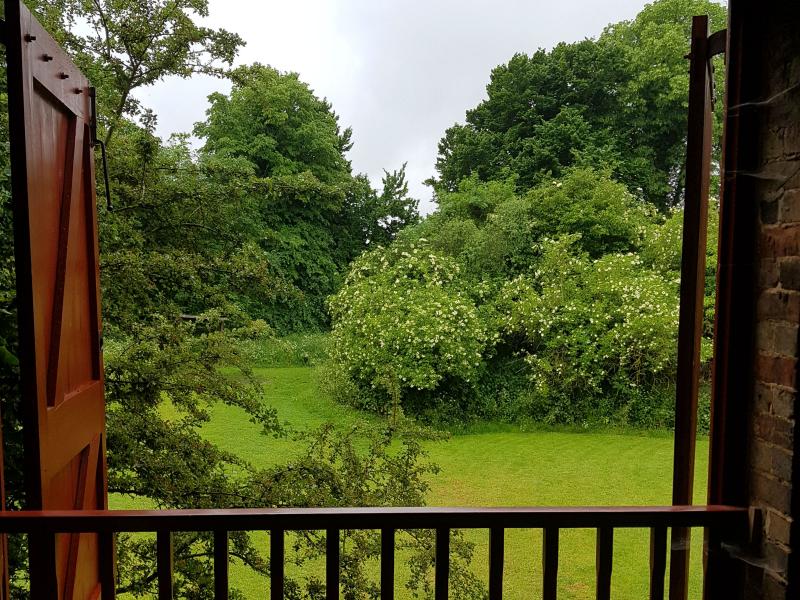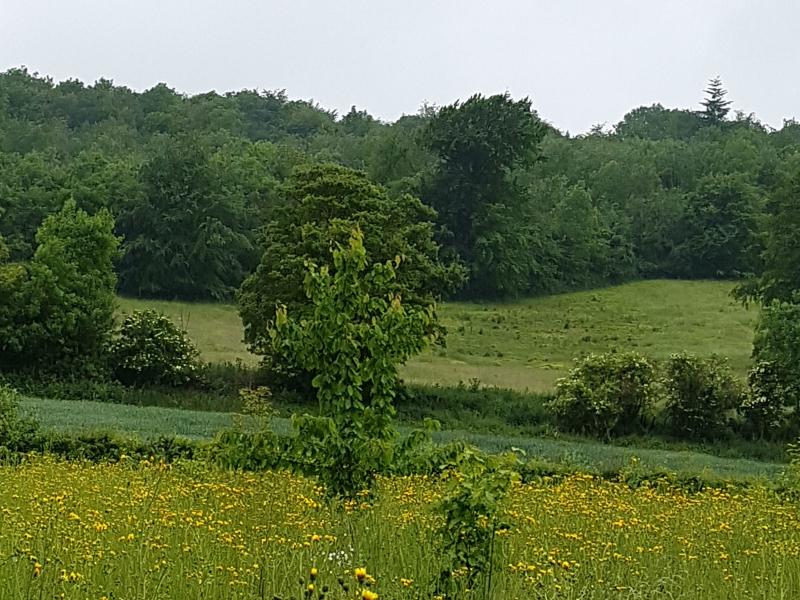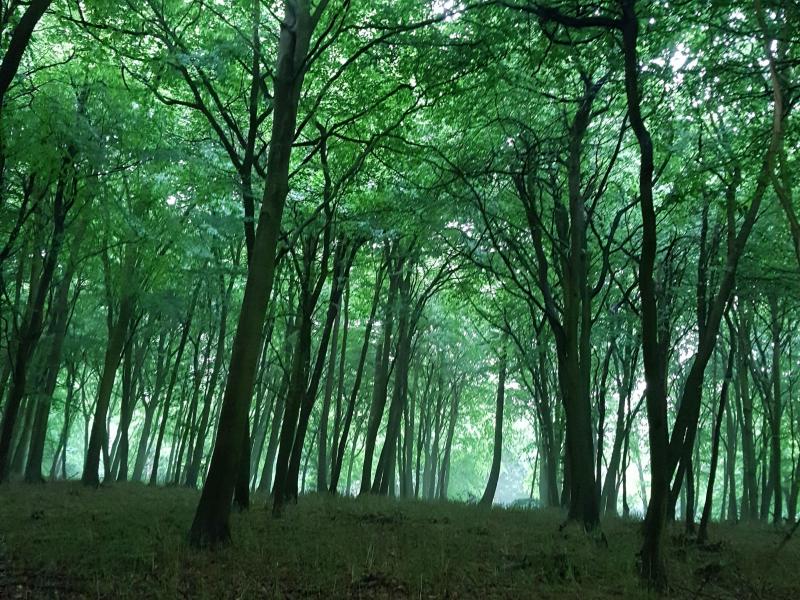Mary Stevens22 Jul 2019
At the start of June we kicked off our latest design challenge, working with a team drawn from across the organisation to explore how we can double the potential of tree cover as a natural climate solution on land in proximity to cities, and in particular in ‘green belt’ areas.
A diversity of habitats
At the start of our design processes we focus on the importance of building trust in our team and immersing ourselves deeply in a topic. This time we took the team to the Quadrangle Trust in Kent which was a great fit; nestled in the valley of the Darent we were never far from the roar of the M25, but still surrounded by the lushness of the early-summer green, swallows circling overhead.
After arriving on foot from Shoreham, over the golf course we kicked off with an introductory session, exploring the necessary conditions for creativity (including distraction-free time, and taking a pause). We were then joined by Fiona MacDonald, a local artist, our guide in exploring the diversity of habitats and land use in this small area.
We saw: conventional arable, an area of community planting (as part of the centenary forest), Council-owned forest (where uncoppiced hazel is now crowding out the ancient oaks), abandoned orchards on the cusp of restoration, new hedgerows and fence where hedgerows used to be land, land reverting to (nature-rich) scrub, and land recently gifted to the wildlife trust. We travelled through dark closed-canopy beech forest, witnessed the ash in retreat, sheltered from the rain on the woodland fringes and soaked our shoes in long, wet grass. And all of this a short train ride from central London.
Micro-reflections from a micro-adventure
There is no substitute for a direct experience of the landscape we are seeking to influence. One of the themes we are exploring is how can we make future realities come to life (for example, what would the augmented reality version of a future greenbelt landscape look like?) but it also struck me that — as with many things — all the solutions are already there, they just need to be brought out. One of the ways in which Fiona brings landscapes to life is through extending our awareness of human to non-human relationships: #askthewood invites humans to invite the trees’ perspective into their lives, whilst her mycorrhizal meditations encourage visitors to the woods to engage with the extraordinary network beneath their feet.
As well as experiencing the landscape with our senses we also explored some of the practical and social dimensions of managing land for nature and trees in a community setting. Just how much organising effort goes into even relatively small-scale projects, like Shoreham’s centenary woodland. And just how little say local people have over how landowners manage their land, whatever the knock-on effects, including for example when a farmer chooses to revert from organic to ‘conventional’ farming and the widespread use of pesticides and herbicides.
The teams we bring together have generally never worked together; ‘immersions’ like this are an opportunity to build trust rapidly — and with it the psychological safety that enables a team to put forward ideas without fear of feeling stupid, and to provide constructive challenge. But they also provide a touchstone for the work as we move forward; throughout the design process our team constantly brought their ideas back to the real-world experience of a small corner of Kent. A few hours away from our desks — but a big shift in perspective.





